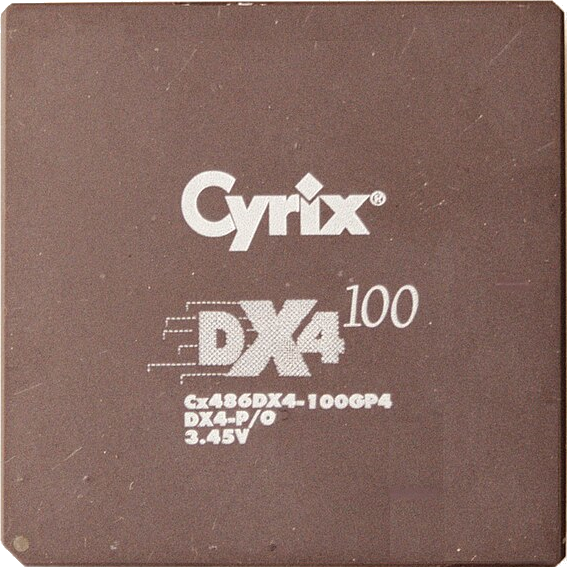Very weird ethernet setup. Gives you a 2.5g port so you could take advantage of the faster fiber many people have access to now, but only a 1g port so you can’t even use the benefits of the faster network on your wired LAN. Not something most people’s internet connections care about, but a weird thing to include regardless; it would have been better to leave them both 1g ports and shave $5+ off the sales price.
I’m sure this is a limit of the commodity chipset but it honestly doesn’t have a place in the network I’m planning to build out as fully 2.5g compatible next year.
I was going to say “with a 2.5g wan port and 1g switch ports, it can saturate 2.5 switch ports” but then I realized that it doesn’t have switch ports, it has one WAN and one LAN port. Definitely a weird choice.
The included MT7976C wifi can theoretically saturate the 2.5 Gbps uplink on its own. The use case is overall throughput for a mixture of wired and wireless devices.
It doesn’t make sense to me to future proof wifi but not wired for $5 more, but maybe it makes sense to people in rural places
Let’s be realistic. How many devices support a mainline version of OpenWRT and have more than one 2.5 Gbe port?
This thing is primarily a wifi router and access point. The available Ethernet ports, which are limited to what the chipset supports, are going to be more than sufficient for the majority of users.
If your main concern is wired throughput to the Internet, you are not the target audience for OpenWrt. The literal point of the OpenWrt project was to be an open source firmware for the WRT54G wireless router. The project has of course grown since then, but that is still its primary intended use case.
You are much more likely to find what you need in pfSense/OPNsense/etc, and on more powerful hardware. I would be way more concerned with the fact that it only has 1 GB RAM.
But if you still want to take that stance, there is nothing stopping you from reconfiguring the 2.5 Gbe port as a VLAN trunk and hanging it off a managed switch. Put your uplink in one VLAN and your LAN in another. That is going to be more than sufficient to saturate the 1 Gbps fiber connection that most people have (or at least asymmetrically saturate the 2 Gbps connection that some people have).
Or if you don’t like that, just do the routing on the switch. If your primary concern is wired throughput, you’ll probably already be doing that anyway. Then just use this thing as an AP, in which case the one port is sufficient.
While that’s great, it’s not of much use to most people if they can’t saturate their link from either wifi or ethernet at separate times. It leaves a lot of wasted capacity imo.
I’m struggling to think what one can even do with just two ethernet ports of different speeds. It’s begging to be used as a gateway, VPN or firewall but you can’t because you’ll top out at 1G anyway. And assuming one of them is the LAN side, supposedly it’ll be going to a switch so the router will never see LAN traffic anyway, only stuff through it which hits the bandwidth limitation.
I guess technically one could bond the WiFi and 1G link to make use of the 2.5G link? Or as an AP like it’s got 2.5G upstream and passes through another AP down the line using the 1G port.
Very questionable specs.
E: it occured to me this looks like a potentially really good standalone AP if you give it 2.5G upstream and then branch off to another device down the line like some Ubiquiti ones do. But the form factor is ugly as hell to be mounted on a ceiling…
Usually the routers you install OpenWRT on are really a CPU with one port to a VLAN-capable switch, and the port labeled WAN on the device is just VLAN’d separately by default. One cool thing OpenWRT lets you do on “normal” hardware is change the VLAN settings on the switch ports which are not accessible under stock firmware.
But if they are shipping “just” the router piece and making people go get their own VLAN-capable switch, I’m not sure what hardware exactly they expect people to use? And I’m not sure what being connected to the switch over one real 2.5G cable is going to do to LAN/WAN throughput, vs. how a “normal” router ties the CPU into the switch through means not known to mortal minds. Maybe it is just as good, maybe it is a huge bottleneck. It is definitely going to add cost over the $89 sticker price.
But if most people are just going to run fiber modem straight to WiFi, maybe this is the right config actually?
The key there is the switch does most of the work in hardware, so you can have 1G going between all ports with no CPU usage, so the internal 1G port doesn’t matter as much, and the hardware acceleration lets it efficiently handle routing across VLANs without involving much of the internal port. Those internal switches can usually handle VLANs and basic NAT nesrly entirely on its own.
With a single external 2.5G port you lose that because your traffic will have to go in the router and back out to the switch to cross VLANs, so it’s basically a 1.25G link. And it needs to be a managed switch too since the router doesn’t come with a built-in one anymore. Best you can do is software VLANs but the other device will need to also use the VLAN explicitly in that case, as there’s no switch to give you untagged ports.
So you would have to pair this with a switch that not only does VLANs but also somehow does your NAT for you.
Maybe VLANs?
You can run a router with just one Ethernet port on it. That’s what subnets are for.
Also, if they only had two gigabit ports with WiFi, they’d be directly competing with the nano-pi for market share. https://www.friendlyelec.com/index.php?route=product/product&product_id=296
Still, I’m actually with you. That is a weird choice to make.
s/subnets/vlans/
It’s not a great idea to have multiple layer 3’s sharing the same layer 2.
yes. that. Thank you. My google and word memory were not helpful when i posted that.
Subnets…do you mean VLANs?
Or sub interfaces?
My Asus XT8 has a similar 2.5gb Wan but the other ports are 1gb
I just got upgraded to 10 Gbit internet the other week and was looking at routers, and it seems to be a surprisingly common configuration (or routers with 10 Gbit WAN and 2.5 Gbit LAN ports). I think router manufacturers are banking on 99% of people only caring about Wi-Fi and then being fooled by those “up to 7000 mbit over wifi!” numbers. And then due to scale those are the only chipsets that are affordable.
Yeah. Tbf at higher bitrates like 10G, if you really want to take full advantage of that insane amount of bandwidth, you really need to have a dedicated router/firewall machine, then use a 10G switched network with a standalone AP and then ethernet to as many devices as you can reasonably reach. 10G is expensive to use, sorry, and your desktops will likely need new NIC pcie cards too if you want to be able to really push 10G to it’s limits.
My home network philosophy has always been that any one device (wifi devices excluded) should be able to use the full capabilities of the network. But that has always been with comparatively shit home internet.
If you have a very large network with a lot of devices and users, then it can be better to just build out 2.5G to each device but have 10G backhaul to your modem just so the bandwidth can be more evenly divided.Yeah after doing a bunch of testing what I settled on was a used ThinkCentre Tiny with a dual 10G NIC running OpenWRT, and then a cheap Chinese PoE switch with 4x2.5G ports and 2x10G SFP+ ports. Router and my main computer on 10G, NAS and Wi-Fi (UniFi AP that I’ve had since before) on 2.5G, and then everything else is on a separate 1G switch.
For a home network, 2.5G LAN is really the sweet spot. The hardware is affordable now, the spinny drives in my NAS can’t realistically do more than 200 MB/s for a real workload, there are no single-stream downloads online that are going to be faster (the fastest “normal” download I’ve seen is 2Gbit from Microsoft)
Yeah, you’d use the 1G port for uplink and 2.5G for internal network use, assuming most of your traffic is internal (e.g. streaming from a NAS or something).
But yeah, the port setup is weird. I’d honestly rather have all 1G ports and have more of them (w/ active PoE) than a single 2.5G port.
Other routers have run OpenWRT straight from the factory before (various GL.iNet devices come to mind, not to mention the OG Linksys WRT54G – it may not have been called “OpenWRT” as such, but OpenWRT descends from that firmware).
In what way is this device “designed specifically” for OpenWRT that those were not?
Linksys WRT54G
The Linksys WRT54G did not run OpenWrt by default and the original OS does not even remotely resemble OpenWrt. What OpenWrt did use from the original OS was the Broadcom wireless driver because it was closed source (and a similar kernel version, so the driver could be used), since there was no driver in the mainline kernel.
But to try to answer the question, this device has been designed by the OpenWrt developers to fit their needs (and their users needs). Other routers running some variant of OpenWrt on them by default were designed by companies unrelated to the project. They most likely used OpenWrt because it was convenient to them. Their intentions weren’t usually the same as the OpenWrt team’s (repairability, easy to unbrick, etc.). Not that there is anything wrong with that. I like GL.Inet routers.
I fail to see how a single port GbE LAN would suffice when other devices got more than that.
I would prefer more LAN ports as well, but how does that relate to what I said? I never said they intended to build or should build a device that fits all use-cases.
They’re puzzled - as am I - on why such a glaring spec failure was chosen by the OpenWRT team.
So it’s Banana Pi.
Begs me to ask why, out of all their models to base on, they gotta pick the one with a 2.5GbE port and a single GbE port. I am fully aware they have similar board with four GbE ports instead.
In sure the idea is that anyone who cares enough to buy specific hardware for openWRT is going to almost certainly have a standalone ethernet switch with far more than 4 devices plugged in.
with far more than 4 devices plugged in
Even more important, I don’t want layer 1 dropping on my devices just because my internet gateway rebooted, especially if I’m using DHCP.
Honey, what do you think runs on those ethernet switches?
Why would I? I just want to run OpenWRT for the features, I don’t even use ethernet other than the port in
This would be potential impulse buy territory if it was 2x2.5… but a mix of 1 and 2.5 is frankly a tad baffling
And why only 2 ports? I’m fine w/ being limited to 1gbps uplink because that’s probably all I’m going to need in the near future, but only having one other port means I definitely need a switch to start using it. I currently use three ports:
- uplink
- wifi AP
- everything else
And having more is always better. Ideally they’d provide 5 ports, and have at least one be PoE (ideally all 5), and I’d be 100% okay with paying a bit more for it.
I’d rather have more ports and have them be PoE but limited to gigabit speeds than only having one 2.5G port w/o PoE. I could maybe be okay with only two ports if one was 10G, but 2.5G is not enough to make it worth redoing my switch setup.
What’s wrong with having a switch? And why build in capability that people aren’t necessarily gonna use?
The intent of this is to be a cheap but capable homelab router. Building in more ports / integrating a managed or unmanaged switch / adding PoE is only going to drive up cost. BYO is absolutely the answer to “I want more ports” here.
Literally the ONLY thing they would need to do to make this perfect is to make the LAN port upgradable to 2.5G - anything past that and people are probably going to be looking at more serious enterprise-grade hardware anyways.
Having at least one more port makes debugging a lot easier, and it also opens the door to port-based VLANs. If they had three ports, it would be infinitely more useful to me, and any more ports than that is just icing on the cake.
But only two ports means you have to get a separate switch unless you’ll only ever have the one ethernet device.
In terms of tradeoffs, drop the Wi-Fi capability entirely and add more physical ports. I doubt the Wi-Fi module is any good (doesn’t even do 6GHz), and it doesn’t seem to be replaceable either. If you’re going for a home-lab setup, you’re going to want more ports. If you’re going for a regular home user use-case, you’d prefer a better Wi-Fi card. Maybe sell two models, one w/ better Wi-Fi (full 6E standard) and one w/ more ports and no Wi-Fi.
Fair points.
I’d say they could make three versions:
- a “clean” single-port WiFi-only model but with actually good WiFi hardware (so, 7 if possible; 6e at least)
- the current model, but with 2x2.5
- one with no WiFi and at least 4 ports, including at least 2x2.5
Yeah, I’d be down with that, and I’d go for the last one. I only need 1 2.5G port, though 2x is always nice to have. The extra gigabit lines would be nice for separated VLANs, like running my camera network (don’t want that touching the net).
I really like the spirit of this, but the price and features are just okay considering there are other companies designing similar and better products with more flexibility and around the same price. I may pick up a board to work on it, still, but I’ll buy the Inet package with the same hardware and more Ethernet ports for $99 if given a choice.
What other hardware at this price point would you consider for running openwrt?
Crap, I literally just bought a GL.iNet GL-MT600 Flint 2 which runs GL.iNet skin over OpenWrt & it has an option in its settings to switch direcrly to OpenWRT if you prefer, or you can also flash OpenWRT onto it yourself too.
Interesting, but at $160 the GL-MT600 is nearly twice the price of the OpenWrt One.
Good to know about though! My whole reason for asking for alternatives is I’ve had a great experience with dd-wrt in the past, and I’m sick of ubiquiti, so I’m looking ahead for my next router.
OpenWRT is cool, but I prefer OPNSense because unlike OpenWRT, you can actually upgrade OPNSense in its UI without requiring linux partition surgery.
What are you talking about? Upgrading on OpenWRT only takes the new ROM image uploaded thru the Web UI.
The in-place upgrade process leaves a lot to be desired, in my experience. I understand why routers with limited storage capacity wouldn’t be able to support it, but the lack of A-B partitioning support for x86 and ARM builds in 2024 is really stupid.
If an upgrade introduces a regression and breaks, my family is stuck without internet while I spend a few hours re-flashing an old release and making sure everything still works.
This, right here, has been my experience every time.
Also when you run a complicated setup with over a dozen VLANs, policy routing for failover internet on specific vlans, and nat66 support due to secondary internet only giving you a /64, yeah… not fun having to set all that up because the updater breaks, yeah… no.
The Linksys WRT3200ACM has A/B firmware support, but unfortunately that router is starting to get a little outdated. Saved me from a couple bad upgrades, but unfortunately it died on me about 4 months ago. I updated to the Banana Pi BPI-R3, which has been great for my network speed, but was a lot more complicated to set up.
I lost all my data from my router trying to update it using the ui and had to reconfigure everything. I use linux for a long time, but openwrt is on another level
I broke my router updating OpenWRT :(
Every single time I’ve setup OpenWRT, keeping it updated was much more painful than anything else, even ASUS WRT-Merlin was easier to keep updated.
Are you trying to say you’re not a fan of needing to reinstall packages after an upgrade? It’s so simple with these easy to remember commands:
opkg update cat /etc/backup/installed_packages.txt | grep overlay | sed s/\ *overlay// | xargs opkg install
That’s why I wrote an Ansible playbook, to configure and update my router and access points. It’s nice having this almost as infrastructure-aa-code, with all configuration changes under version control with a clear commit message. The script is available at https://github.com/danielvijge/openwrt-configuration-ansible, but do make some changes to match your configuration. I keep my network configuration (inventory file) in a separate, private GitHub repo, as that contains passwords etc.
OpenWRT is a different scope than opnSense.
I have a few OpenWRT devices to cover WiFi in my home and definitely an opnSense on top of them for wan access and all the fancy stuff.
OpnSense can’t to WiFi access point, thanks to BSD limited WiFi cards support, and definitely cannot fit on cots devices like OpenWRT can.
As well as indeed opnSense is a better choice than OpenWRT for edge devices.
While OpenWRT would do opsSense job, at least in part, the opposite is not true.
I use Unifi Access Points for wifi
Weird. Been upgrading several OpenWrt machines for many years now. Click a button in the UI, select a file, click another button to update.
I personally just buy MikroTik routers. Yeah, they’re not FOSS AFAIK, but they work really well and there are a ton of guides and whatnot. They also have a good assortment of hardware, so finding the right fit for my network is pretty easy.
If I ever decided to go away from MikroTik, I’d probably DIY my own router instead of going w/ something like OpenWRT. I did my time w/ DD-WRT, Tomato, and OpenWRT, and honestly, I prefer my MikroTik router.
I once setup MikroTik routers… they were cool, but the ipv6 implementation required manual intervention - this is not something you want with an isp that dynamically rotates their ipv6 addresses often. Once I discovered pfSense/OPNSense, it was so much better in configurability and ease of upgrade, as those OSses are FreeBSD-based and designed to run on PCs.
My ISP doesn’t support IPv6, so I haven’t needed to touch that, but we’ll be getting muni fiber soon-ish (they claim the next year or two), so that could change. I’ll definitely think about upgrading to pfSense or something when that happens.
For that price I recommend an EU built router that comes with a modified OpenWRT but also allows installing vanilla one - Turris Omnia. It is also very modular an can be upgraded (e.g. with 5G)
Turris Omnia is 4x the price of the OpenWrt One.
I think I must have switched up currencies and somehow concluded the price is the same. That’s on me
I saw the omnia for €339, vs this router…
On top of the other comments about price, last i checked, it doesnt support higher than 5ghz which was the deal killer for me, i almost bought it, hell i almost backed the project on whatever funding platform they were using, then that was revealed and i just forgot about it.
Definitely in the vein of what I was looking for, but for almost $90 I am going to ask for WiFi 6E
Personally I’d get standalone AP’s and hang them off a standalone switch so that if the internet gateway goes down the LAN experience is not interrupted.
I don’t know what that would do for me, though, what can I do on the LAN when the internet gateway is down? Also, why should the gateway reboot? I would like it to be up all the time
The gateway device should definitely be up at all times, but in the real world, things don’t always go as planned.
If you only use the internet, then maybe having your AP go down when your gateway goes down is fine. For us avid self-hosters, that is unacceptable behavior.
what can I do on the LAN when the internet gateway is down
Access your NAS from your workstation or your media PC.
deleted by creator
Ah… Yeah 6e seems like a reasonable ask
a reasonable ask
Off the car lot, we say ‘request’.
I’m a little confused, what do you mean? That because it’s an open source project it’s more polite to request than demand?
Sincere question, I don’t quite follow
That’s awesome! The links to buy seem to be down though which is less than helpful
Hm, this might not be a bad replacement for my Unifi access points, if its radio is up to snuff. It’s significantly cheaper than Unifi for WiFi 6.
E: ordered one
It’s great to see innovative products like the OpenWrt One empowering users with more control and freedom over their tech. Having a device that’s unbrickable and fully customizable is definitely a step in the right direction. Speaking of customization, for those who enjoy editing their photos on the go, the Lightroom MOD APK offers a similar level of flexibility. Click here to explore more about this app. With it, users can unlock premium features for advanced editing, allowing you to personalize your photos to your heart’s content without any limitations. Just like the OpenWrt One, it gives users full control, but in the world of photography!
I don’t do a lot of self-hosting and what little bit I do is just my Monero node over tor. So I primarily just use Wi-Fi on my devices and never use Ethernet. In fact, I don’t think I’ve connected Ethernet to a router for a primary device in like 10 years. I have connected Ethernet to a device temporarily to do troubleshooting, but having a device connected to Ethernet all the time is something I have not done in a long, long time.
Industry “conventional wisdom” often argues that FCC requirements somehow conflict with the software right to repair. SFC has long argued that’s pure FUD.
i mean, it is at conflict with right to repair. having to accept harmful interference to be certified means that repairability suffers simply because the device needs to be made to break.
I don’t think that’s what accepting harmful interference means. It means more like, if there is noise in the channel, the device won’t just up its own power to clobber the noise, even if not doing that will somehow break it or otherwise make it not work right. It doesn’t mean you have to build the device so that some kinds of interference will cause it to break.
i have always interpreted it as you cannot block signals that will break you. like if the us military drops an emp on you, you can’t design for that.
now that i type it out i realize how weird it sounds though.















